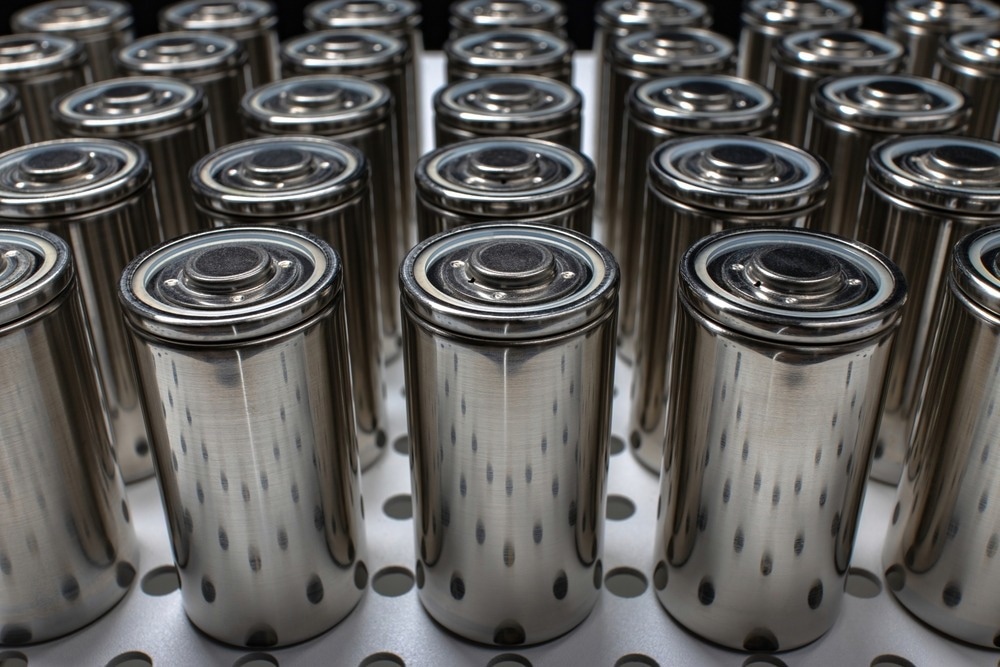Sep 19 2022Reviewed by Mila Perera
Tokyo Metropolitan University scientists have shown that electrochemical impedance spectroscopy (EIS) can be a valuable non-destructive method for studying the degradation mechanisms of all-solid-state lithium metal batteries.

Image Credit: Troggt/Shutterstock.com
The group investigated ceramic-based all-solid-state Li metal batteries made using aerosol deposition and heating to determine the exact interface responsible for the performance loss. Their research depicts engineering challenges that must be solved to bring these best-in-class batteries to market.
Electric vehicles (EVs) are important to global efforts to reduce carbon emissions, and the battery is at the heart of every EV. For enhancing the driving range and boosting vehicle safety, battery architecture remains a major constraint.
All-solid-state lithium metal batteries, one of the proposed alternatives, can provide greater energy density, safety, and reduced complexity. Still, technical challenges continue to hinder their adoption in everyday vehicles.
The high interfacial resistance between electrodes and solid electrolytes is a critical issue. In many battery designs, the cathode and the electrolyte materials are brittle ceramics, making proper contact between them challenging. There is also the issue of determining which interface is causing the problem.
Degradation in all-solid-state lithium metal batteries is typically studied by cutting them open, making it impossible to determine what is happening while the battery is working.
Using an aerosol deposition approach, a team led by Professor Kiyoshi Kanamura at Tokyo Metropolitan University has produced all-solid-state Li metal batteries with decreased interfacial resistance. Microscopic cathode material chunks are driven towards a layer of ceramic electrolyte material, where they clash to produce a dense layer.
To prevent cracks from forming during a collision, the researchers coated the cathode chunks with a “solder” substance. This softer, low melting point material can be heat treated to create perfect contact between the newly formed cathode and electrolyte.
The final all-solid-state Li/Li7La3Zr2O12/LiCoO2 cell offers a great initial discharge capacity of 128 mAh g-1 at both 0.2 °C and 60 °C. It also retains high-capacity retention of 87% after 30 charge/discharge cycles. This is the best result for all-solid-state Li metal batteries with ceramic oxide electrolytes, emphasizing the need to understand how they could degrade.

Aerosol deposition of cathode material involves accelerating microscopic chunks and colliding them with an electrolyte surface to form a dense film. To understand the strengths and weaknesses of their new battery design, the team used electrochemical impedance spectroscopy, applying electrical signals to measure the effective resistances of the range of interfaces present in the battery. Image Credit: Tokyo Metropolitan University.
In this case, the team employed electrochemical impedance spectroscopy (EIS), a commonly used diagnostic method in electrochemistry. They were able to separate the resistances of various interfaces in their battery by analyzing how the cell responds to electrical impulses of different frequencies.
In the case of their novel cell, they discovered that a rise in resistance between the cathode material and the solder was the primary cause of cell capacity decline, which they accomplished without ripping the cell apart. They also supported this claim with in-situ electron microscopy, which clearly showed interface breaking during cycling.
The team’s ideas not only resulted in a cutting-edge battery design but also indicated the next stages for developing further advancements utilizing a non-damaging, widely available manner. Their new paradigm for batteries in the next generation of EVs promises significant breakthroughs.
The Advanced Low Carbon Technology Research and Development Program (ALCA)—Specially Promoted Research for Innovative Next Generation Batteries (SPRING) (Grant No. JPMJAL1301) from the Japan Science and Technology Agency (JST) supported the study.
Journal Reference
Cheng, E. J., et al. (2022) Degradation Mechanism of All-Solid-State Li-Metal Batteries Studied by Electrochemical Impedance Spectroscopy. ACS Applied Materials & Interfaces. doi.org/10.1021/acsami.2c09841.
Source: https://www.tmu.ac.jp/english/index.html